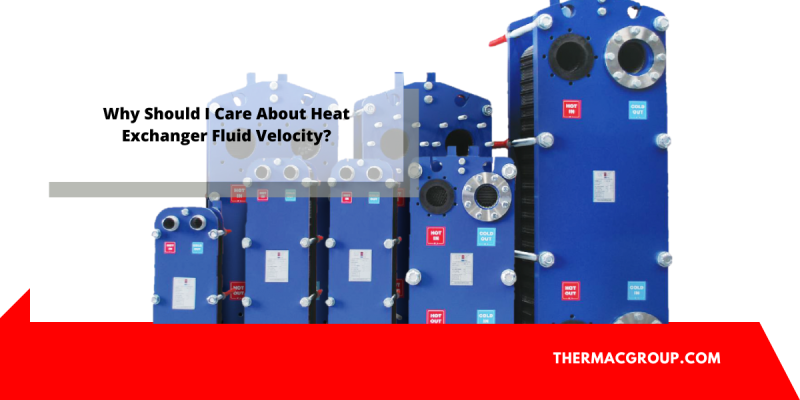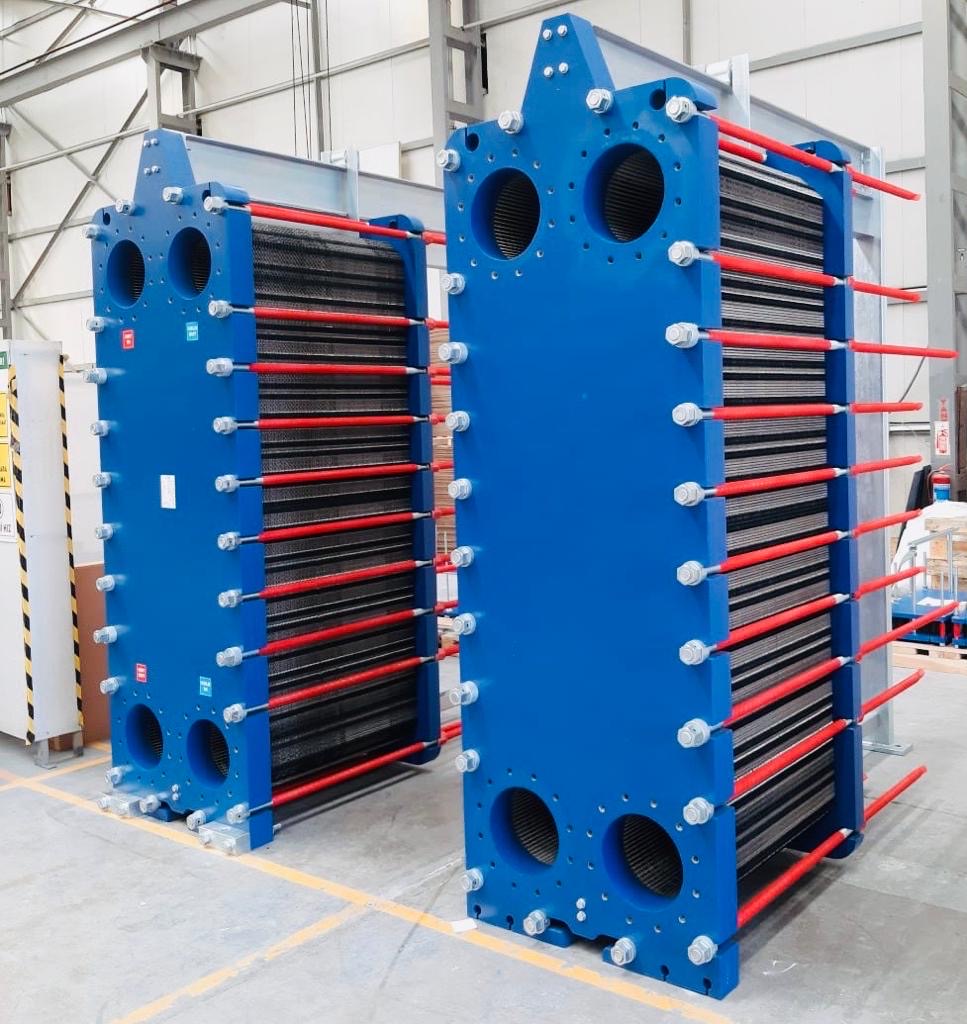The heat exchanger is the heart of almost every fluid temperature control system. Unfortunately, choosing the right heat exchanger may be difficult.
The first consideration is the thermal load that must be transported. Following that are the criteria for working pressure, flow rate, and chemical compatibility. These, in conjunction with heat transfer, dictate the configuration (gasketed plate, brazed plate, shell & tube, etc.) and materials of construction.
The velocity of the fluids in the heat exchanger, on the other hand, is one of the least known and infrequently discussed characteristics, despite the fact that it may have a significant impact on system performance.
The Effect of Low Velocity
The velocity of a fluid is, of course, a function of its flow rate and the volume of the path it must take. The most common mistake in heat exchanger design is to allow for too low a fluid velocity. It turns out that this can cause a variety of problems with system performance.
The first issue with decreased velocity is settling in the fluid. Most distributed fluids are a combination of liquids and solids (paints and varnishes are a good example).
If the fluid’s velocity is insufficient to generate enough turbulence to keep the solids suspended, settling will occur. Pigments and other fillers will begin to settle out in the heat exchanger in systems with low velocity – typically less than 1.0 fps (foot per second).
Normally, this continues undetected until the channels begin to clog and the backpressure in the heat exchanger rises, signaling that it needs to be serviced.
Meanwhile, when the channels narrow, the velocity rises, causing stress on the settled materials’ surfaces.
You’d assume that when these solids pass past, they’d rejoin the coating, but that’s not the case. These solids agglomerate into a bulk when they settle. When this pile is “pulled-on” by passing fluid, fragments break off and clumps move through the system to the point of dispense, clogging nozzles.
This causes downtime and maintenance – typically, the gun or nozzle is changed despite the fact that it was not the underlying source of the problem — which represents an additional overhead expense.
However, numerous colors are frequently cycled through the system, particularly in the case of paints and coatings. These settled pigments and solids are now visible as contamination in the new hue — and any painter will tell you that it doesn’t take much red to make a white pink!
Again, not addressing the velocity in the heat exchanger causes quality difficulties and extra expenses.
Thermal Transfer is Affected by Velocity
The influence of velocity on the thermal transfer properties of the heat exchanger is often overlooked: It turns out that the higher the velocity across the heat exchanger, the more accurately the picture is described. the greater the turbulence — and the greater the turbulence, the greater the efficiency of heat transfer
You might be asking how it is possible. The solution is found in the flow’s turbulence.
You’ll recall that turbulent flow causes a lot of disruption along the flow path. Turbulence drives the fluid against the heat exchanger walls, increasing friction between the fluid and the surface.
Turbulence continually pushes new fluid against the heat exchanger’s metal walls, and the bigger the volume of fluid in contact with the heat exchanger’s walls, the greater the thermal transfer.
The inverse of turbulent flow is “laminar flow,” which is described as a smooth, linear flow across the system. As turbulence decreases, the layer on the heat exchanger’s walls thickens. As the “film coefficient” rises, the heat transfer efficiency decreases.
Pressure Drop and Reynolds Numbers
Reynolds Numbers are used to quantify turbulence. Higher Reynolds Numbers indicate turbulent flow, whereas lower Reynolds Numbers indicate laminar flow.
While raising Reynolds Numbers improves thermal transfer, it also increases pressure drop through the heat exchanger, whereas smooth flow through the heat exchanger associated with laminar flow generates a lower pressure drop but also a poorer thermal efficiency.
It’s worth noting that as the viscosity of the fluid being dispensed grows, so does the velocity necessary to raise the Reynolds Numbers and prohibit laminar flow, which has an even bigger influence on pressure drop via the heat exchanger.
Because pressure drop must be considered when designing a dispensing system, trying to balance heat transfer with pressure drop can be a vicious loop — especially in high-pressure systems associated with high-viscosity sealers and adhesives.
For more information about heat exchanger malaysia, please visit https://thermacgroup.com/



